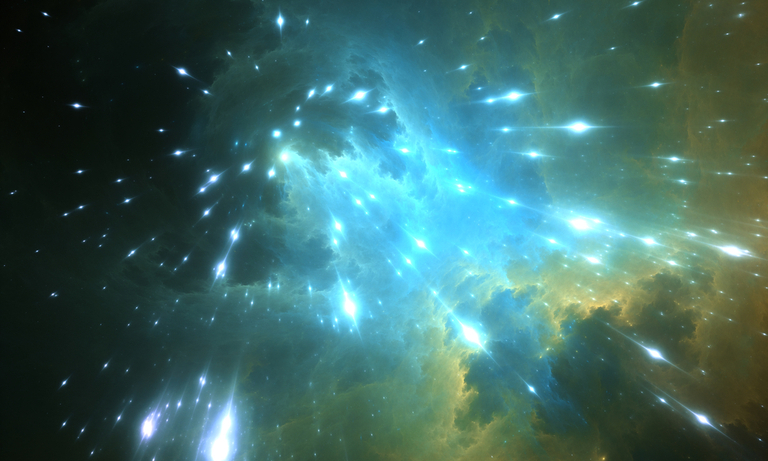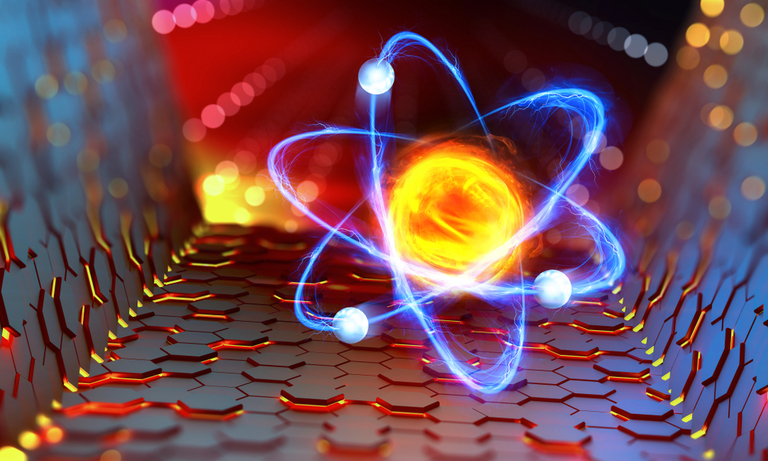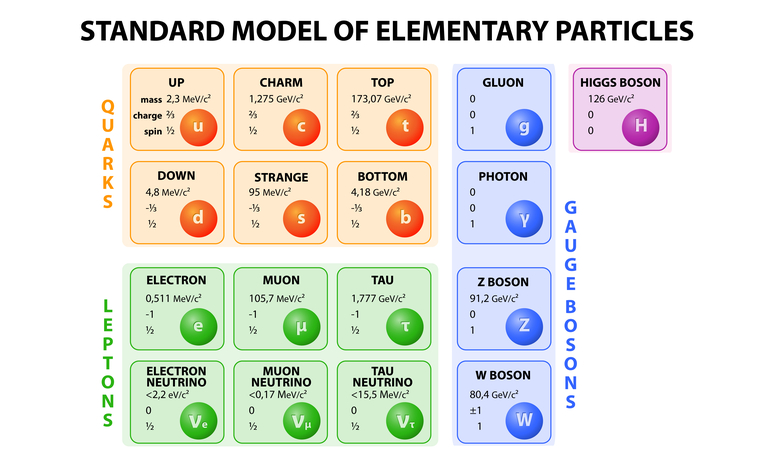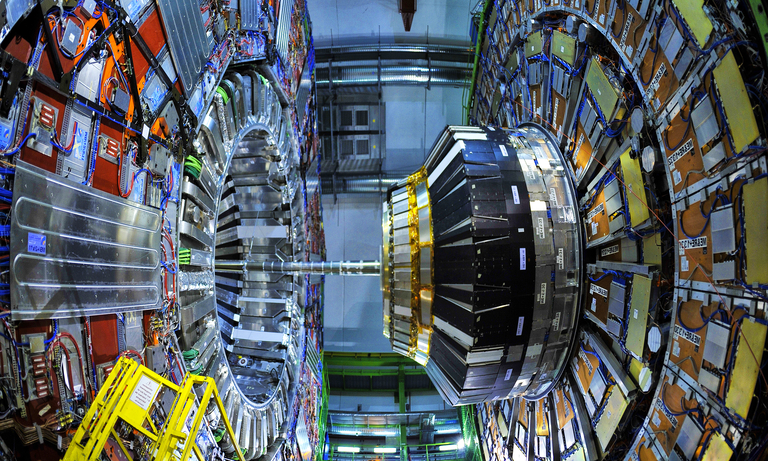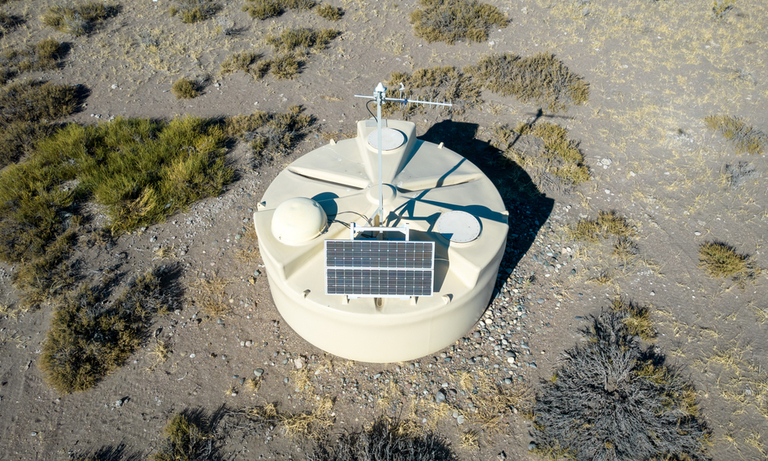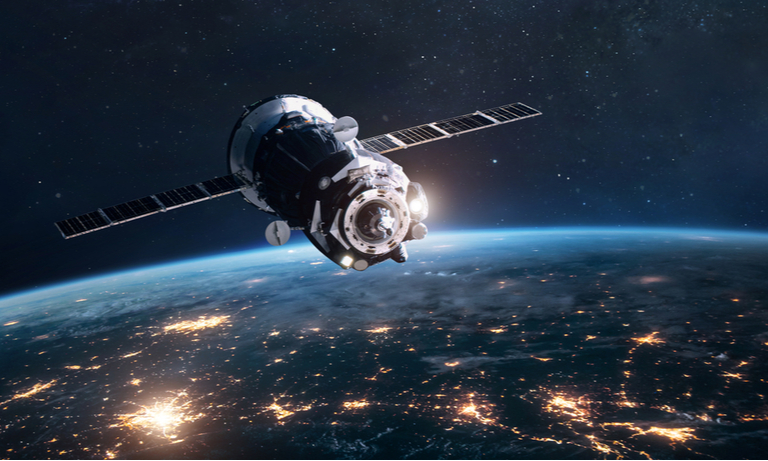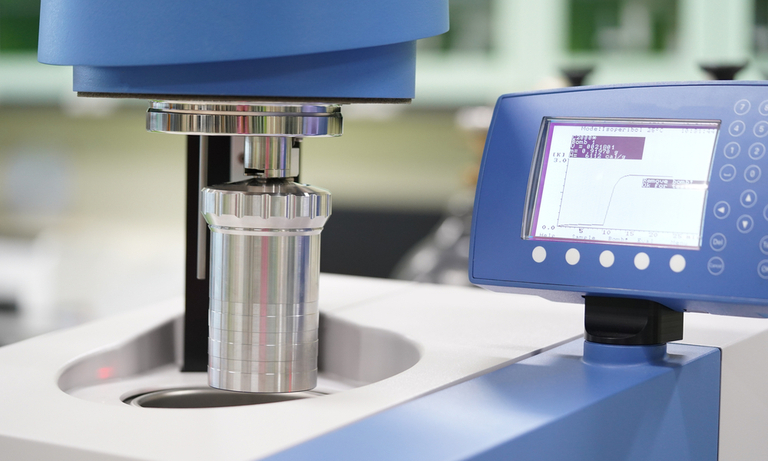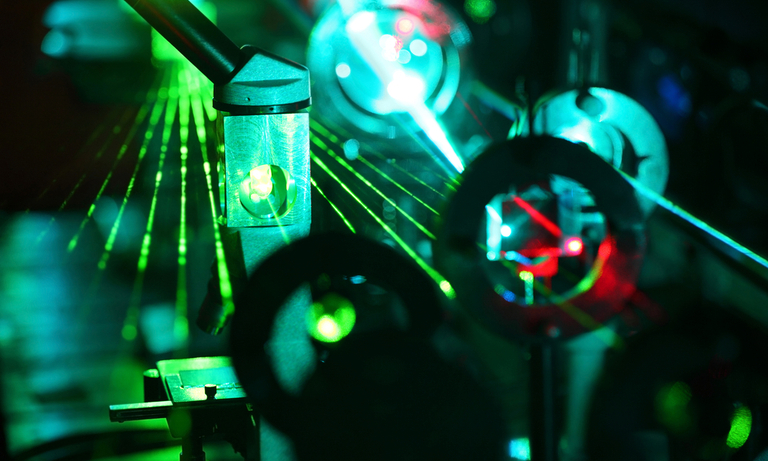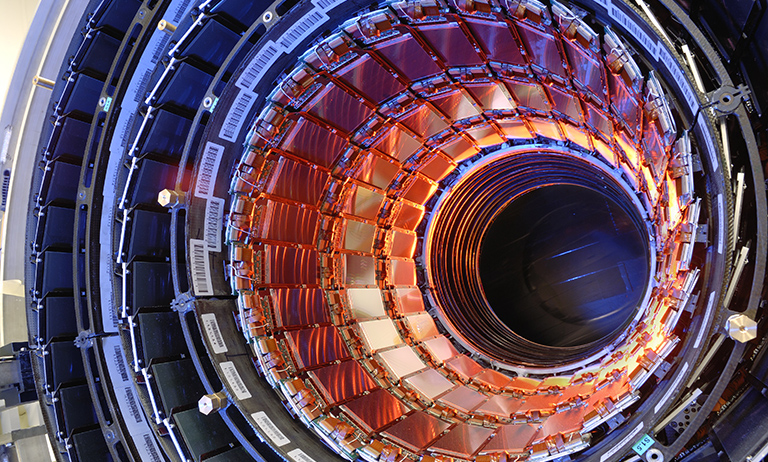Home
Products
Physics Research Field
Type of Experiment
Detector Type
Behind the Science
Tech in a Nutshell
United Kingdom (EN)
Select your region or country.

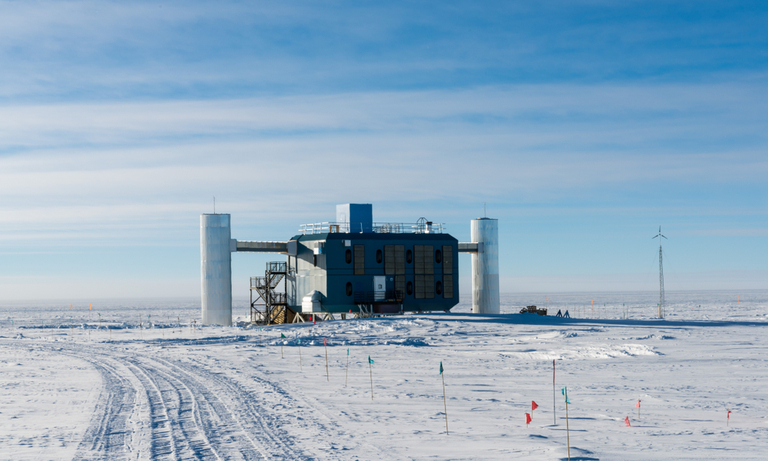
Deep Underground and Underwater Detector
Located deep underground under kilometers of rock ice, or deep underwater in the abysses, particle physics experiments can look at the deep universe in a unique way, promising challenging discoveries.
The presence of a thick layer of rock or ice strongly reduce particles coming from the cosmos, allowing to observe only neutrinos, a subatomic particles among the most abundant in the universe, but difficult to study since they very rarely interact with matter.
Neutrino was first postulated by Wolfgang Pauli in 1930 in order to explain the continuous spectrum of beta decay, however it remained unobserved until 1956 where Clyde Cowan and Frederick Reines carried out a revolutionary experiment which used the Savannah River nuclear reactor in South Carolina as a source of beta decay.
Neutrino properties make it a unique probe of the deep universe since, arriving undeflected on earth, they will help to pinpoint distant sources of powerful radiation, like quasars or gamma-ray bursts and will help to further investigate the mechanism under catastrophic events in the universe like supernovae explosion and gravitational waves.
Since neutrinos weakly interact with matter and are neutral particles, they can only be detected using huge detectors and looking at the Cherenkov light emitted by the secondary charged particle created by the interaction within the detector volume. The Cherenkov light emission by a charged particle traveling in a medium is possible when it passes through it at a speed greater than the phase velocity of light in that medium.
Super-Kamiokande in Japan, IceCube in Antarctica and the KM3NeT project in the Mediterranean sea are important examples of present and future experiments designed to give an important contribution in astro-particle physics
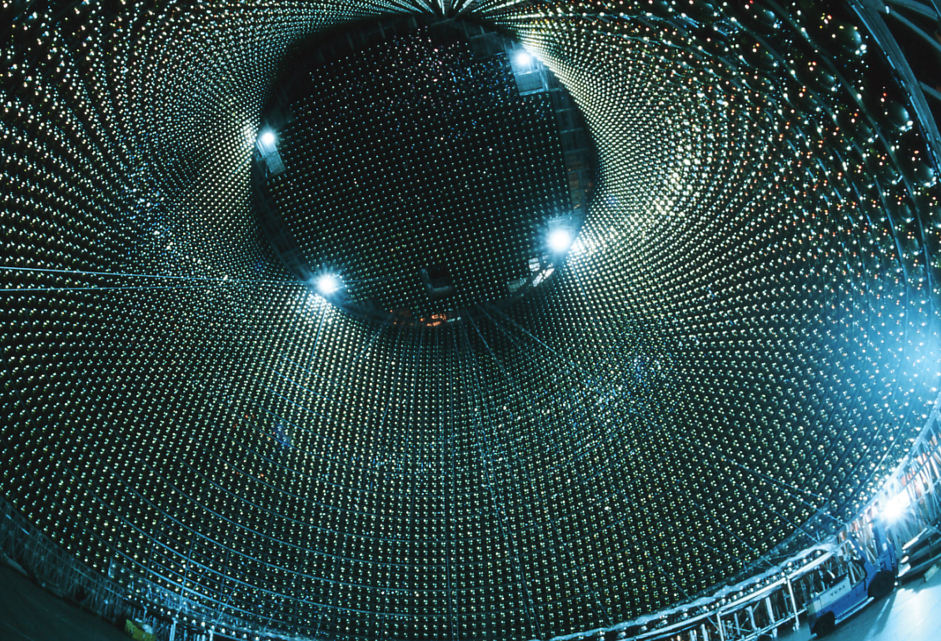
Super-Kamiokande inner detector
Super-Kamiokande is a neutrino observatory located 1,000 m underground in Mount Ikeno at the Kamioka Observatory of the Institute for Cosmic Ray Research, University of Tokyo.
Designed to study neutrino oscillations and seek for the decay of the nucleon, it began in 1996. In more than 20 years it has produced important results in the field of atmospheric and solar neutrino oscillations, and has set stringent limits on the decay of the nucleon, the existence of dark matter and astrophysical sources of neutrinos.
Super-Kamiokande, for the first time definitively demonstrated that neutrinos have mass and undergo flavor oscillations. For such important result, in 2015 Professor Takaaki Kajita and the Super-Kamiokande collaboration have been awarded of the Nobel Prize in Physics along with Arthur B. McDonald and the SNO collaboration, another neutrino oscillation experiment located in Canada.
The detector has a cylindrical shape, 41.4 m tall and 39.3 m in diameter, holding 50 ktons of ultra-pure water and is divided into an inner detector and outer detector which is used to veto all the possible external background. The inner detector is faced by 11,129 Hamamatsu R3600 50 cm diameter photomultiplier tubes and 1,885 Hamamatsu R5912 20 cm diameter that face the outer detector.
Neutrinos interacting with the electrons or nuclei of water produce a charged particle that creates a cone of Cherenkov light. The cone of light is projected as a ring on the wall of the detector and recorded by the photomultiplier tubes.
An upgrade of this detector, Hyper-Kamiokande, is under discussion among an international collaboration and will be about ten times bigger than Super-Kamiokande and splitted in two tank instead of one.
The IceCube Neutrino Observatory is a neutrino telescope located at the Amundsen–Scott South Pole Station in Antarctica. It consists of 5,610 spherical optical sensors called Digital Optical Modules, each with a 10-inch diameter photomultiplier tube Hamamatsu R7081-02.
DOMs are arranged along 86 vertical cables, each of which has sixty modules that are located in a volume of one cubic kilometer of highly transparent ice, situated at depths from 1450 to 2450 meters in the ice.
The DOMs will detect the optical light emitted by fast-moving electrically-charged particles, each of which is the result of a collision with a high-energy neutrino that penetrated the earth. The Antarctic neutrino observatory, also includes the surface array IceTop and DeepCore. IceTop is used to study the cosmic ray composition and to identify the muon coming from a cosmic-ray which could be misidentified as a neutrino event in the ice. DeepCore extends the observable energies below 100 GeV.
The strings of DeepCore are deployed at the center of the larger array, between 1760 and 2450 meters into the ice.
In November 2013 the IceCube collaboration announced the detection of 28 neutrinos with an energy ranging from 30 to 1200 TeV that likely originated outside of the Solar System and substantially more than the expected from backgrounds.
KM3NeT – so named because it will encompass an area of several cubic kilometers – is a future experiment that will be located in the deepest seas of the Mediterranean in two different places: ORCA in front of Toulon (France) and ARCA, in front Portopalo di Capo Passero (Italy).
The main objective will be the detection of neutrinos from distant and catastrophic astrophysical events like supernova remnants, gamma-ray bursts or colliding stars. It will also search for dark matter in the universe.
Like in IceCube it will consist of Digital Optical Module (DOM) arranged along vertical cables along the KM3NeT array and will be able to identify the Cherenkov light given off by muons produced by neutrinos interactions in the sea. Each DOM is a standalone module with 31 3-inch Hamamatsu photomultiplier tubes R12199-02 in a 17-inch glass sphere .
The experiment will also house instrumentation for Earth and Sea sciences, and on-line monitoring of the deep sea environment at a depth of several kilometers.
- Confirmation
-
It looks like you're in the . If this is not your location, please select the correct region or country below.
You're headed to Hamamatsu Photonics website for GB (English). If you want to view an other country's site, the optimized information will be provided by selecting options below.
In order to use this website comfortably, we use cookies. For cookie details please see our cookie policy.
- Cookie Policy
-
This website or its third-party tools use cookies, which are necessary to its functioning and required to achieve the purposes illustrated in this cookie policy. By closing the cookie warning banner, scrolling the page, clicking a link or continuing to browse otherwise, you agree to the use of cookies.
Hamamatsu uses cookies in order to enhance your experience on our website and ensure that our website functions.
You can visit this page at any time to learn more about cookies, get the most up to date information on how we use cookies and manage your cookie settings. We will not use cookies for any purpose other than the ones stated, but please note that we reserve the right to update our cookies.
1. What are cookies?
For modern websites to work according to visitor’s expectations, they need to collect certain basic information about visitors. To do this, a site will create small text files which are placed on visitor’s devices (computer or mobile) - these files are known as cookies when you access a website. Cookies are used in order to make websites function and work efficiently. Cookies are uniquely assigned to each visitor and can only be read by a web server in the domain that issued the cookie to the visitor. Cookies cannot be used to run programs or deliver viruses to a visitor’s device.
Cookies do various jobs which make the visitor’s experience of the internet much smoother and more interactive. For instance, cookies are used to remember the visitor’s preferences on sites they visit often, to remember language preference and to help navigate between pages more efficiently. Much, though not all, of the data collected is anonymous, though some of it is designed to detect browsing patterns and approximate geographical location to improve the visitor experience.
Certain type of cookies may require the data subject’s consent before storing them on the computer.
2. What are the different types of cookies?
This website uses two types of cookies:
- First party cookies. For our website, the first party cookies are controlled and maintained by Hamamatsu. No other parties have access to these cookies.
- Third party cookies. These cookies are implemented by organizations outside Hamamatsu. We do not have access to the data in these cookies, but we use these cookies to improve the overall website experience.
3. How do we use cookies?
This website uses cookies for following purposes:
- Certain cookies are necessary for our website to function. These are strictly necessary cookies and are required to enable website access, support navigation or provide relevant content. These cookies direct you to the correct region or country, and support security and ecommerce. Strictly necessary cookies also enforce your privacy preferences. Without these strictly necessary cookies, much of our website will not function.
- Analytics cookies are used to track website usage. This data enables us to improve our website usability, performance and website administration. In our analytics cookies, we do not store any personal identifying information.
- Functionality cookies. These are used to recognize you when you return to our website. This enables us to personalize our content for you, greet you by name and remember your preferences (for example, your choice of language or region).
- These cookies record your visit to our website, the pages you have visited and the links you have followed. We will use this information to make our website and the advertising displayed on it more relevant to your interests. We may also share this information with third parties for this purpose.
Cookies help us help you. Through the use of cookies, we learn what is important to our visitors and we develop and enhance website content and functionality to support your experience. Much of our website can be accessed if cookies are disabled, however certain website functions may not work. And, we believe your current and future visits will be enhanced if cookies are enabled.
4. Which cookies do we use?
There are two ways to manage cookie preferences.
- You can set your cookie preferences on your device or in your browser.
- You can set your cookie preferences at the website level.
If you don’t want to receive cookies, you can modify your browser so that it notifies you when cookies are sent to it or you can refuse cookies altogether. You can also delete cookies that have already been set.
If you wish to restrict or block web browser cookies which are set on your device then you can do this through your browser settings; the Help function within your browser should tell you how. Alternatively, you may wish to visit www.aboutcookies.org, which contains comprehensive information on how to do this on a wide variety of desktop browsers.
5. What are Internet tags and how do we use them with cookies?
Occasionally, we may use internet tags (also known as action tags, single-pixel GIFs, clear GIFs, invisible GIFs and 1-by-1 GIFs) at this site and may deploy these tags/cookies through a third-party advertising partner or a web analytical service partner which may be located and store the respective information (including your IP-address) in a foreign country. These tags/cookies are placed on both online advertisements that bring users to this site and on different pages of this site. We use this technology to measure the visitors' responses to our sites and the effectiveness of our advertising campaigns (including how many times a page is opened and which information is consulted) as well as to evaluate your use of this website. The third-party partner or the web analytical service partner may be able to collect data about visitors to our and other sites because of these internet tags/cookies, may compose reports regarding the website’s activity for us and may provide further services which are related to the use of the website and the internet. They may provide such information to other parties if there is a legal requirement that they do so, or if they hire the other parties to process information on their behalf.
If you would like more information about web tags and cookies associated with on-line advertising or to opt-out of third-party collection of this information, please visit the Network Advertising Initiative website http://www.networkadvertising.org.
6. Analytics and Advertisement Cookies
We use third-party cookies (such as Google Analytics) to track visitors on our website, to get reports about how visitors use the website and to inform, optimize and serve ads based on someone's past visits to our website.
You may opt-out of Google Analytics cookies by the websites provided by Google:
https://tools.google.com/dlpage/gaoptout?hl=en
As provided in this Privacy Policy (Article 5), you can learn more about opt-out cookies by the website provided by Network Advertising Initiative:
http://www.networkadvertising.org
We inform you that in such case you will not be able to wholly use all functions of our website.
Close


